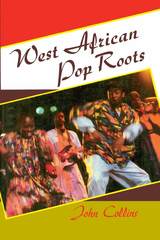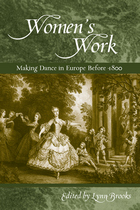272 books about Dance and 3
start with W
272 books about Dance and 3
272 books about Dance
3 start with W start with W
3 start with W start with W

West African Pop Roots
John Collins
Temple University Press, 1992
"Collins-Lowry gives persuasive examples of how employment gains made by Blacks in the 80's were rather more marginalized than we like to think."
--Publishers Weekly
Against the backdrop of increasing ambivalence in the federal government commitment to race-based employment policies, this book reveals how African-Americans first broke into professional and managerial jobs in corporations during the sixties and offers in-depth profiles of their subsequent career experiences.
Two sets of interviews with the most successful Black executives in Chicago's major corporations are used to demonstrate how the creation of the Black business elite is connected to federal government pressures and black social unrest that characterized the civil Rights movement in the sixties.
Black Corporate Executives presents, first hand, the dilemmas and contradictions that face this first wave of Black managers and reveals a subtle new employment discrimination. Corporations hired these executives in response to race-conscious political pressures and shifted them into "racialized" positions directing affirmative action programs or serving "special" markets of minority clients, customers, or urban affairs. Many executives became, as one man said, "the head Black in charge of Black people." These positions gave upper-middle-class lifestyles to those who held them but also siphoned these executives out of mainstream paths to corporate power typically leading through planning and production areas. As the political climate has become more conservative and the economy undergoes restructuring, these Black executives believe that the importance of recruiting Blacks has waned and that the jobs Blacks hold are vulnerable.
Collins-Lowry's analysis challenges arguments that justify dismantling affirmative action. She argues that it is a myth to believe that Black occupational attainments are evidence that race no longer matters in the middle-class employment arena. On the contrary, Blacks' progress and well-being are tied to politics and employment practices that are sensitive to race.
[more]

Wilde Times
Patricia Wilde, George Balanchine, and the Rise of New York City Ballet
Joel Lobenthal
University Press of New England, 2016
At eighty-seven, Patricia Wilde remains a grande dame of the ballet world. As a young star she toured America in the company of the Ballet Russe. In her heyday in the 1950s and ’60s, she was a first-generation member and principal dancer of New York City Ballet during the uniquely dramatic Balanchine era—the golden age of the company and its hugely gifted, influential, exploitative, and dictatorial director. In Wilde Times, Joel Lobenthal brings the world of Wilde and Balanchine, of Tanaquil Le Clercq, Diana Adams, Suzanne Farrell, Maria Tallchief, and many others thrillingly to life. With unfettered access to Wilde and her family, friends, and colleagues, Lobenthal takes the reader backstage to some of the greatest ballet triumphs of the modern era—and some of the greatest tragedies. Through it all Patricia Wilde emerges as a figure of towering strength, grace, and grit. Wilde Times is the first biography of this seminal figure in American dance, written with the cooperation of the star, but wide-ranging in its use of sources to tell the full and intertwining stories of the development of Wilde, of Balanchine, and of American national ballet at its peak in the twentieth century.
[more]

Women’s Work
Making Dance in Europe before 1800
Edited by Lynn Matluck Brooks
University of Wisconsin Press, 2007
Like the history of women, dance has been difficult to capture as a historical subject. Yet in bringing together these two areas of study, the nine internationally renowned scholars in this volume shed new and surprising light on women’s roles as performers of dance, choreographers, shapers of aesthetic trends, and patrons of dance in Italy, France, England, and Germany before 1800.
Through dance, women asserted power in spheres largely dominated by men: the court, the theater, and the church. As women’s dance worlds intersected with men’s, their lives and visions were supported or opposed, creating a complex politics of creative, spiritual, and political expression. From a women’s religious order in the thirteenth-century Low Countries that used dance as a spiritual rite of passage to the salon culture of eighteenth-century France where dance became an integral part of women’s cultural influence, the writers in this volume explore the meaning of these women’s stories, performances, and dancing bodies, demonstrating that dance is truly a field across which women have moved with finesse and power for many centuries past.
Through dance, women asserted power in spheres largely dominated by men: the court, the theater, and the church. As women’s dance worlds intersected with men’s, their lives and visions were supported or opposed, creating a complex politics of creative, spiritual, and political expression. From a women’s religious order in the thirteenth-century Low Countries that used dance as a spiritual rite of passage to the salon culture of eighteenth-century France where dance became an integral part of women’s cultural influence, the writers in this volume explore the meaning of these women’s stories, performances, and dancing bodies, demonstrating that dance is truly a field across which women have moved with finesse and power for many centuries past.
[more]
READERS
Browse our collection.
PUBLISHERS
See BiblioVault's publisher services.
STUDENT SERVICES
Files for college accessibility offices.
UChicago Accessibility Resources
home | accessibility | search | about | contact us
BiblioVault ® 2001 - 2024
The University of Chicago Press









